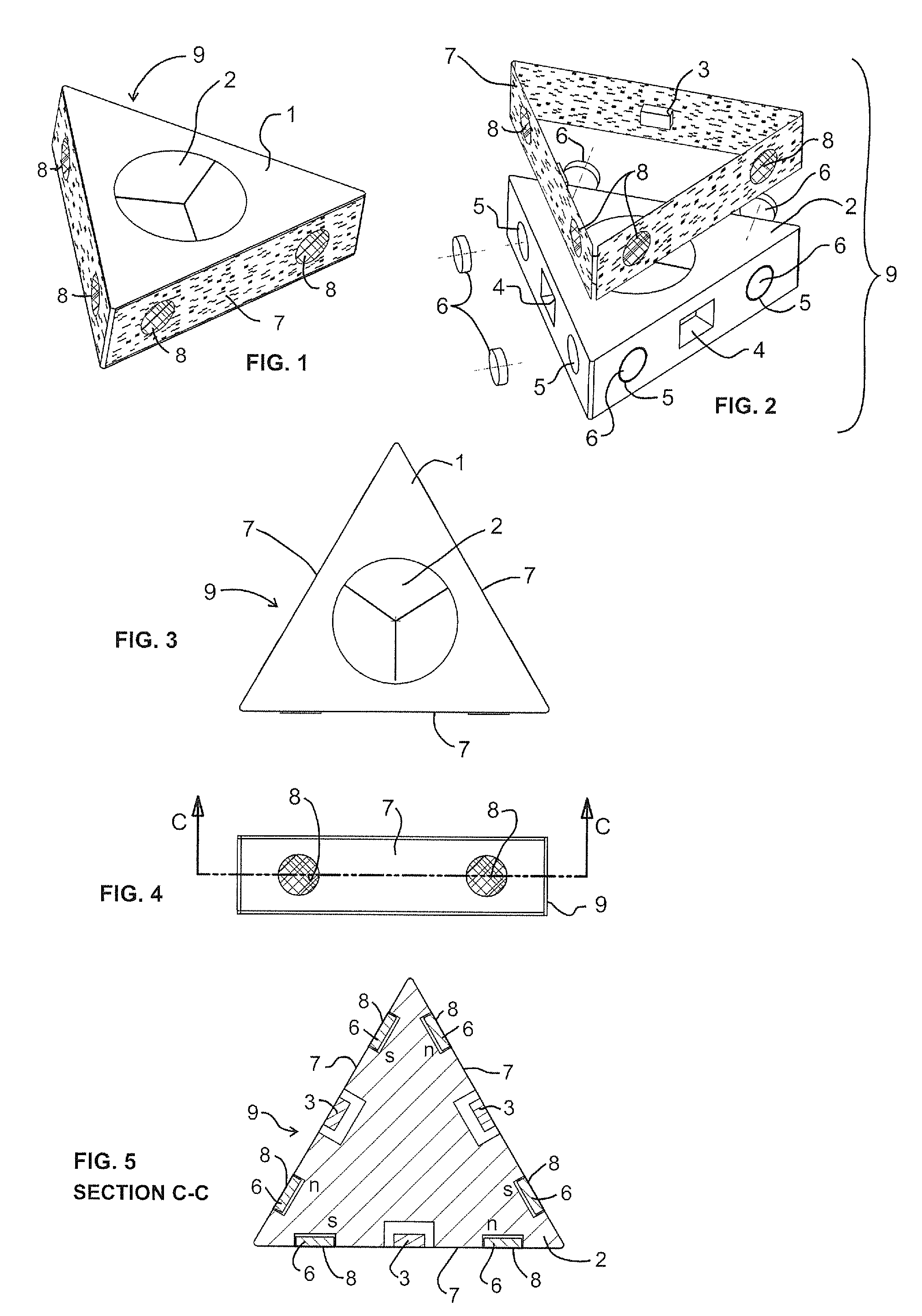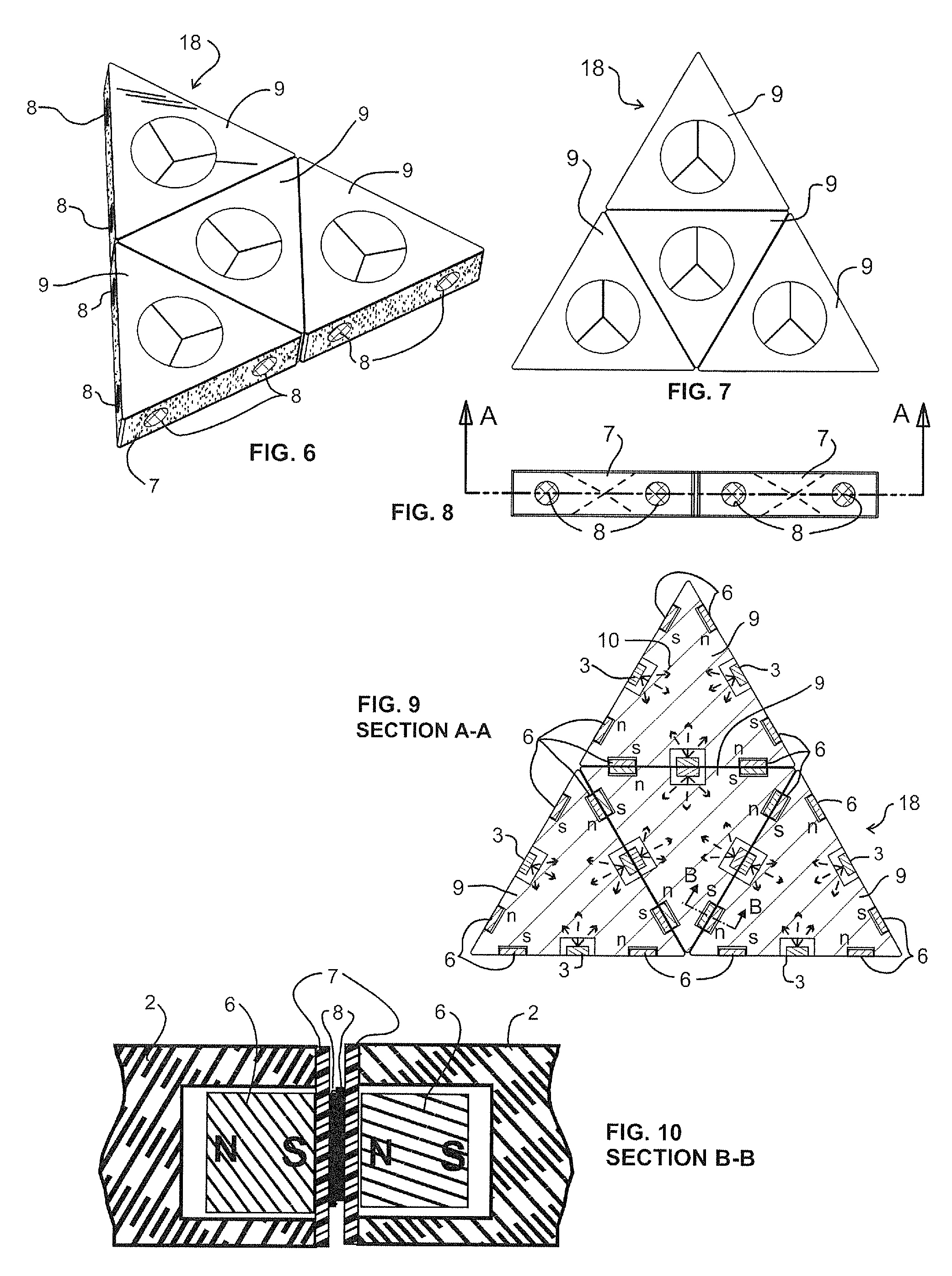Flexible magnetic interconnects
a magnetic interconnect and flexible technology, applied in the field of electric connectors, can solve the problems of limiting the shape and size of interconnected modules, affecting the design and manufacturing of different composite assemblies, and affecting the design of the connection, so as to achieve the effect of reducing the number of connectors
- Summary
- Abstract
- Description
- Claims
- Application Information
AI Technical Summary
Benefits of technology
Problems solved by technology
Method used
Image
Examples
Embodiment Construction
[0107]In some embodiments, the modular electrical interconnection methods and systems provided in this disclosure utilize permanent magnets in combination with flexible or compliant electrical circuit substrates or localized flexible contacts on a rigid substrate. The flexible / compliant electrical contact structures, when mated, are located substantially between permanent magnets of opposing modules, or between magnets on one module and ferromagnetic material on an opposing module. The attraction of opposing magnets of adjacent modules (or magnets and ferromagnetic areas), compresses the contact pads of the flexible circuitry, thus generating contact force for electrical interconnection, and also provides some attractive force to mechanically retain the modules together. Systems made from these modules can be easily and reversibly assembled. No elastic properties of the contact system are required for reliable functioning of this connector system. The electrical contacts are constan...
PUM
| Property | Measurement | Unit |
|---|---|---|
| thick | aaaaa | aaaaa |
| thick | aaaaa | aaaaa |
| diameter | aaaaa | aaaaa |
Abstract
Description
Claims
Application Information
 Login to View More
Login to View More - R&D
- Intellectual Property
- Life Sciences
- Materials
- Tech Scout
- Unparalleled Data Quality
- Higher Quality Content
- 60% Fewer Hallucinations
Browse by: Latest US Patents, China's latest patents, Technical Efficacy Thesaurus, Application Domain, Technology Topic, Popular Technical Reports.
© 2025 PatSnap. All rights reserved.Legal|Privacy policy|Modern Slavery Act Transparency Statement|Sitemap|About US| Contact US: help@patsnap.com



